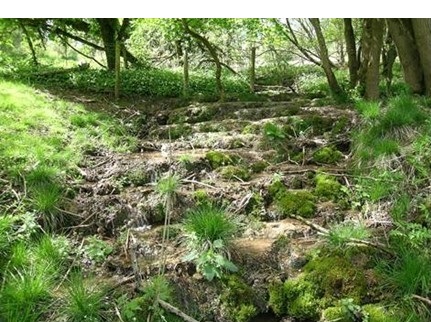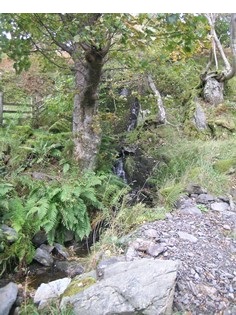
Headwater streams are small streams at the upstream end of river networks, (commonly defined as being within 2.5 km from their source). They cover a wide range of climatic, hydrological and water chemistry types, from lime-rich to acid water chemistry and from gentle flows to energetic cascades. They support a range of specialist species, including those that have adapted to survive the seasonal dry periods of intermittent stream sections. Headwater streams support a range of small fish species such as bullhead, brook lamprey, minnow and

stickleback, but can be naturally fishless (at least for periods of time) which allows invertebrate species such as specialist headwater stoneflies and caddis-flies to become more prominent. A large number of river invertebrate species are only found in headwater streams and their marginal springs and flushes. These streams have been degraded on a widespread basis by drainage, overgrazing, associated loss of riparian trees, abstraction, impoundment, channel modifications and pollution.
Temporary streams
Most watercourses that only flow for part of the year are headwater streams (although sections of river further downstream can dry up naturally, particularly on limestone and chalk geologies). Collectively known as temporary streams, there are different types of flow intermittence that generate somewhat different habitat conditions and therefore types of biological assemblage. ‘Ephemeral’ streams carry water unpredictably according to recent rainfall, whilst ‘intermittent’ streams have predictable dry periods associated with seasonal variations in groundwater levels. Ephemeral streams tend to be dominated by generalist species, whereas intermittent streams (including the classic chalk winterbournes) also support specialist species that have evolved to exploit the predictable wet and dry phases. Temporary stream habitat typically occurs within a longitudinal sequence of stream sections encompassing permanently flowing to almost permanently dry, although drier sections are not always upstream of wetter sections.